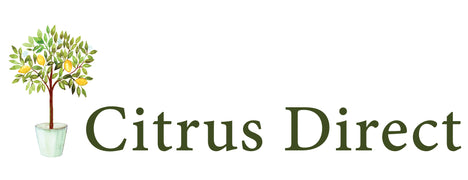Overview of How to Protect your Citrus Trees from Insects and Disease.
Dec 28, 2024
New Zealand's climate, while ideal for citrus growth, can also attract unwanted pests and diseases. Here's a guide to keeping your citrus trees healthy and thriving. For greater information on a specific insect, refer to their specific blog.
Integrated Pest Management (IPM): This approach uses a combination of cultural, organic and conventional methods for a holistic approach. IPM involves prevention, monitoring, biological control methods and chemical treatments. Start with the least-toxic options and escalate if necessary. Always follow the instructions and safety precautions on the label of any product you use.

Above: An example of Integrated Pest Management.
Note how the least invasive methods (prevention, sanitation) are at the bottom.
Prevention is Key:
- A healthy tree is a resistant tree!
- Promote strong growth with regular feeding and good drainage.
- Ensure good air circulation around the tree and avoid overhead watering. This reduces susceptibility to diseases.
- Apply a broad-spectrum copper fungicide spray like Yates Copper Oxychloride Fungicide monthly, especially during spring and autumn. This will help prevent fungal diseases like downy mildew, rust, and citrus scab.
- Ensure you secateurs and loppers are sterilised before use and between each plant. This reduces the chance of transferring disease between trees.
Monitor your Trees Regularly: Early detection and intervention are crucial for successful pest and disease control. By taking preventative measures and acting swiftly when problems arise, you can keep your citrus trees healthy and producing delicious fruit for years to come.

Photo Above: Monitoring citrus trees for signs of disease and insect infestation.
Provide a Healthy Environment: Promptly remove and destroying fallen leaves, fruit and weeds underneath your tree. This minimizes the opportunity for pathogens to spread.

Photo Above: Kaffir tree with dead and decaying leaves and fruit on the ground.
Common signs of pest presence or plant disease:
- Stem or leaf wilt
- Leaf chlorosis or mottling
- Puncture wounds, chewing marks or leaf mines
- Mildew, indicated by powdery growth on leaves
- Reduced crop size or yield
- Decayed leaves, stems, fruit
- Deformed fruit
Identification is Important: If you're unsure about the specific pest or disease plaguing your citrus, take a photo and visit your local PGG Wrightson store or garden centre. Their teams can identify the culprit and recommend the most suitable treatment options based on your preference for organic or conventional methods.
Timing is Key: Apply treatments during calm weather conditions, ideally in the cooler parts of the day, early morning or late afternoon. The reason for this is that Bees are less active at these times and when it is hot and sunny sprays, especially oils, can burn the leaves of your trees.
Common Citrus Diseases in NZ:
- Black Spot: This fungal disease causes dark, sunken spots on fruit and leaves.
- Downy Mildew: Appears as yellow or white patches on the undersides of leaves, causing them to curl and distort.
- Phytophthora: This disease rots the roots of your citrus tree, leading ultimately to the death of the tree
- Verrucosis or citrus scab: Brown /cream scabs or blisters on the fruit. Has also been described as looking like flat warts.
- Melanose: Red and brown spots on infected leaves and fruit.
Treatment of Common Citrus Diseases:
- Black Spot: Remove and destroy infected fruit and leaves.
- Downy Mildew: Prune affected branches and improve air circulation. Apply copper fungicide or neem oil sprays according to label instructions.
- Phytophthora: The best treatment is prevention. Ensure you tree is planted in well-draining soil. If the soil is heavy, add gypsum and compost when planting. Raise the citrus tree above the surrounding ground level so that the tree doesn't site in water.
- Verrucosis or citrus scab and Melanose: Remove all fallen leaves and burn or place in rubbish. Do not compost. Ensure you tree is open in the centre and has plenty of air movement.
For all Bacterial and fungal diseases: Apply copper fungicide sprays as a preventative and treatment measure. This is especially important during periods of lots of rain, at petal fall and if a tree is infected.
Common Harmful Citrus Insects in NZ:
- Aphids: These soft-bodied insects are small and black or green in colour. They cluster on leaves and stems, sucking sap and causing leaves to curl and distort.
- Scale Insects: These brown insects with a semi hard glossy shell. They appear as bumps or scales on branches, stems and leaves. These leave behind a sticky residue which attracts other insects such as ants.
- Mealybugs: Cottony white insects that accumulate on branches, leaves, steams, and fruit, sucking sap and weakening the tree.
- Whitefly: Tiny whiteflies with wings gather on the undersides of leaves, sucking sap and distorting the leaves.
- Citrus Tree Borer: The borer insect can be devastating to citrus trees. It creates holes and tunnels in the branches and trunk. In worst cases turning the wood to dust. If you have a bad infestation, you might see borer dust on the ground under the tree.
Treatment of Harmful Citrus Insects in NZ:
Biological Methods: In the nursery we use a variety of beneficial insects, mites and microbes as well as flowers and traps to control harmful insects. We purchase our bugs from Bioforce, seeds from Kings Seeds and sticky traps and pheromone lures from Fruit Fed.
Beneficial insects such as Ladybirds are those which eat or disrupt the life cycle of harmful insects without affecting bees. Beneficial Nematodes and Fungi improve the soil and the root health of your citrus tree. Plants such as marigold, petunias, borage, garlic and rosemary deter common citrus pests. Sweet alyssum and cilantro entice beneficial insects.

Photo Above: Marigolds planted as a deterrent of citrus pests
Organic Methods:
- Aphids and Mealybugs: These can be blasted off with a strong jet of water. If water pressure fails, see below:
- Scale Insects and Whitefly: Target them during new growth flushes.
- For Aphids, Mealybugs, Scale Insects, Caterpillars and Whitefly we recommend the following: Insecticidal soap, Neem oil spray, Kiwicare's Organic Super Spraying Oil, Yates Conqueror Oil concentrate, Yates Nature's Way Organic Citrus, Vegie & Ornamental Spray can be used. Oil-based spray smothers the insects on contact.
- Citrus Tree Borer: This is difficult to control. Again, prevention is key. Prune only between May and August when the citrus tree borer is not laying eggs. If you have borer in your tree, remove all infected branches and burn them. Spray with No Borer Injector Spray.
Conventional Methods:
For persistent pest problems, consider using commercially available insecticidal
sprays containing ingredients like imidacloprid, white oil, or pyrethrum. Purchase these from your local garden centre or Fruit Fed.
Always follow the application instructions and safety precautions on the label.




